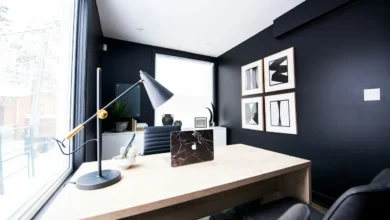5 web design basics
While it may seem like a huge logistical and financial challenge, the actual process of creating a website for an online business is potentially easier and cheaper now than it ever has been before.
The key is to have a clear idea of what you’re trying to achieve and how to achieve it.
If you can’t articulate what you need the website to do, then you’re not ready to start building it. The following are five considerations to help you clarify what you need from your website.
1. Context first
While it’s tempting to think of a website in terms of all the bells and whistles your competitors have, the first thing you need to consider is how it slots into your overall marketing strategy.
“Firstly, determine the objective of your website. Always look at it from a marketing perspective,” says Sonja van den Bosch, managing director of Twinlife Marketing. “Is it an online brochure, that people go to after they have met your sales team? Does it need to drive inquiries via the search engines? Do you need to generate leads, or do you want to sell online?”
2. Research heat mapping
Once you’ve settled on the goal for your site, it’s time to consider how the basic layout of each page will best serve it. This is where heat mapping comes in handy.
Heat mapping tracks the movement of each visitor’s cursor across a webpage. The idea is that the movement of the cursor mirrors how a visitor’s eye travels around a page. A heat map of a page shows the points that get the most cursor traffic. These areas should be treated as focal points in web design. They’re where your site’s most important features should be displayed.
Google has conducted a significant amount of heat mapping research in order to make the layout of their search results more effective and to find the best places for display ads on web pages. Much of what the search company has found has been published online, and this information is useful when plotting the layout of a website.
“One example is that the logo should be on the top left-hand corner and the contact us on the top right-hand corner, sales call-outs on the right-hand side of the page above the fold,” says van den Bosch.
“Only once you’ve worked out the structure of your website on paper should you involve a web designer/web developer. These are technicians and should be given clear marketing direction.”
3. Use a popular CMS
It’s important to use a well-known and widely-used open source content management system (CMS). The more popular the CMS, the more web developers there will be creating templates and plug-ins for it, which in turn broadens the possibilities for your website. Twin life Marketing’s van den Bosch suggests that WordPress is the best choice for this reason.
“It is the most search engine optimization (SEO) friendly and cost-effective CMS system around that will ensure that you’ll be able to make changes yourself and add extra functionality later on if you need it.”
If you decide to incorporate a future social media platform into your site, for example, then it’s more likely that someone will have created an add-on to make that happen for WordPress. A well-used CMS is one that never goes out of date.
4. Browser testing
One aspect of web design that’s commonly overlooked by business owners is browser testing. Just because a website looks good in the web browser that you use, doesn’t mean it renders the same way in other browsers.
“Make sure that your website is tested across various different browsers and that it is mobile-friendly,” says van den Bosch. “Don’t use Flash. It is now also possible to develop completely mobile compatible websites in WordPress.”
5. Don’t spend too much on incidentals
Finally, unless your website is likely to attract hundreds of thousands of visitors every day, it’s unwise to sink too much money into the hosting.
“Don’t get trapped into expensive hosting packages,” says van den Bosch. “You don’t need to spend more than $10 per month for a reliable hosting package for a normal information-based website.”
If you need to host video or other rich content for your website, then scale your hosting up accordingly. And if you suddenly receive an influx of traffic that overloads your hosting and crashes the site, then that’s a good problem to have – when it happens, you know it’s time to upgrade.






